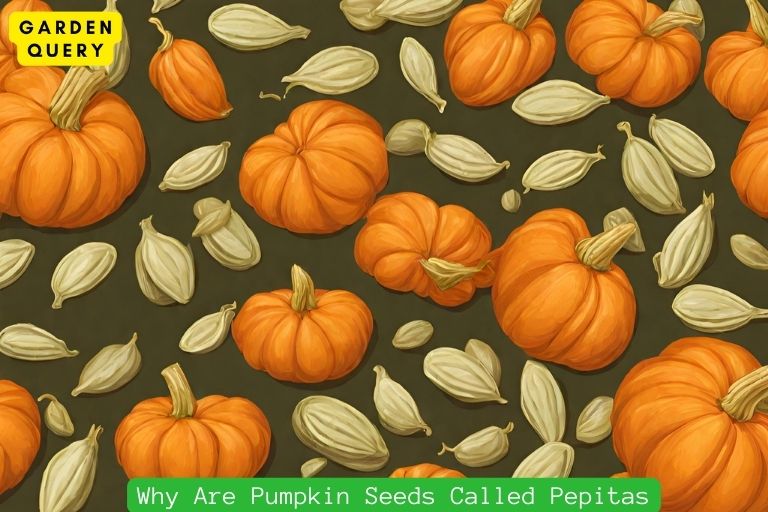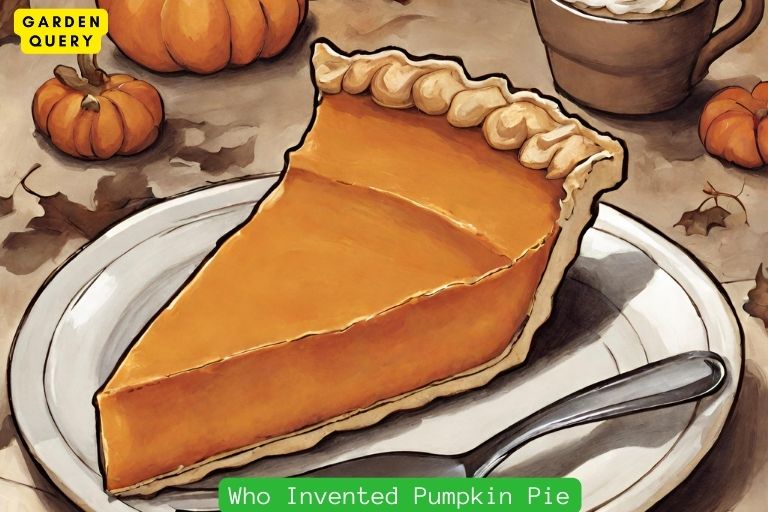Why Are Pumpkin Seeds Called Pepitas?
Origin of the Term
The term “pepitas” might be a bit unfamiliar to some, but it is actually the Mexican Spanish name for pumpkin seeds. The word “pepita” is derived from the Spanish word “pepites,” which means little seeds.
Originally, the term “pepitas” was exclusively used in Mexico and other Spanish-speaking countries. However, with the growing popularity of Mexican cuisine worldwide, the term has made its way into English usage as well, particularly in the United States.

So why are pumpkin seeds called pepitas? Well, the name is believed to have originated from the Aztecs, who were the indigenous people of Mexico. They were among the first to recognize the nutritional benefits of pumpkin seeds and used them extensively in their diet.
In the Nahuatl language, which was spoken by the Aztecs, the word for pumpkin was “pepon.” To refer to the seeds of the pumpkin, they added the diminutive suffix “ita,” resulting in “pepon-ita” or “pepita.”
When the Spanish arrived in Mexico during the 16th century, they adopted the language and incorporated many Nahuatl words, including “pepita.” As a result, the name “pepitas” became widely accepted and is now commonly used to refer to pumpkin seeds, particularly in Mexican cuisine.
It’s interesting to note that the term “pepitas” is specifically used for hulled pumpkin seeds, which means the outer shell has been removed. The process of removing the shell enhances the taste and makes them easier to eat, which is why hulled pumpkin seeds are often preferred.
In Mexican cuisine, pepitas are a staple ingredient and are used in a variety of dishes. They are often roasted and seasoned with spices like chili powder, paprika, or cumin, adding a delicious crunch and flavor to dishes like salads, soups, and even desserts.
Apart from their taste and culinary uses, pumpkin seeds have various health benefits as well. They are a rich source of nutrients like protein, fiber, healthy fats, vitamins, and minerals. They have been associated with improving heart health, promoting digestion, boosting immunity, and even aiding in weight loss.
In conclusion, the term “pepitas” originated from the Aztecs and has become a widely used name for pumpkin seeds, particularly in Mexican cuisine. The name reflects the rich cultural heritage of Mexico and the nutritional significance of these tasty little seeds. Whether you enjoy them as a snack or in your favorite recipes, pepitas are a delicious and nutritious addition to any diet.
Usage and Translation
Pepitas, the Spanish name for pumpkin seeds, are a versatile ingredient that can be used in a variety of dishes. They are commonly used in Mexican cuisine and can be found in traditional recipes such as mole, salsa, and pozole.
Pepitas add a crunchy texture and nutty flavor to dishes, making them a popular choice for both savory and sweet recipes. They are often used as a topping for salads, soups, and roasted vegetables, or added to baked goods like muffins and cookies.
In addition to their culinary uses, pepitas also have a number of health benefits. They are a good source of protein, healthy fats, and fiber. They are also rich in vitamins and minerals, including magnesium, potassium, and zinc.
When it comes to translation, the term “pepitas” is widely recognized in English-speaking countries as a specific type of pumpkin seed. The word is derived from the Spanish language, where it refers specifically to the hulled pumpkin seeds. In Spanish, the term “semillas de calabaza” can be used to refer to pumpkin seeds in general, including the ones with the shell.
It’s important to note that in some English-speaking countries, the term “pumpkin seeds” may be used interchangeably with “pepitas,” while in others, “pepitas” specifically refers to the hulled variety. This can sometimes lead to confusion, but ultimately it depends on the regional usage and context.
In summary, pepitas, or pumpkin seeds, are a versatile ingredient that can be used in a variety of dishes. They are commonly used in Mexican cuisine and have a crunchy texture and nutty flavor. They are also packed with nutrition and can be a healthy addition to your diet. Just be mindful of the regional variations in terminology when using or translating the term “pepitas.”
Cultural Significance
Pumpkin seeds, known as pepitas in many parts of the world, hold significant cultural value in various societies. Throughout history, these little seeds have played a role in different cultural practices and traditions.
In Mexican culture, pepitas have been a staple ingredient for centuries. They are used in a variety of traditional dishes, such as mole, a rich sauce made with chilies and spices. Pepitas add a unique texture and flavor, enhancing the overall taste of the dish. In addition, they are often sprinkled on top of soups or used as a garnish for salads and other Mexican specialties. The cultural significance of pepitas is evident in their wide usage and inclusion in traditional recipes.
Furthermore, pumpkin seeds hold spiritual importance in some Native American cultures. They are associated with harvest celebrations and are used in various rituals and ceremonies. For instance, the Hopi people of Arizona perform a pumpkin dance where pumpkin seeds are used as part of the ceremonial attire. The seeds are strung together into necklaces and worn during the dance, symbolizing abundance, fertility, and connection to the earth.
In Eastern European cultures, roasted pumpkin seeds are commonly consumed as a snack. Known as “dessiatka” in Ukraine, they are often enjoyed during family gatherings or as a treat for children. Roasting the seeds brings out their rich flavor, creating a delightful and crunchy snack. In these cultures, the act of sharing and enjoying pumpkin seeds has become a way to connect with loved ones and celebrate togetherness.
Additionally, pumpkin seeds have a long history in traditional medicine. They have been used in Chinese and Ayurvedic practices for their various health benefits. In Chinese medicine, they are believed to nourish the liver and kidney, promote digestion, and relieve inflammation. They are also a good source of nutrients, including protein and essential minerals, making them a valuable addition to a balanced diet.
In conclusion, the cultural significance of pumpkin seeds, known as pepitas, is deeply rooted in various societies around the world. From their usage in traditional recipes to their spiritual and symbolic importance in ceremonies, these seeds have played a significant role throughout history. Whether enjoyed as a snack, incorporated into culinary delights, or used for medicinal purposes, pumpkin seeds continue to hold value and represent the rich cultural heritage of different communities.
Culinary Application
Pumpkin seeds, also known as pepitas, have a wide range of culinary applications and are a popular ingredient in many dishes around the world.
One of the most common uses of pumpkin seeds is in baking. They can be added to muffins, bread, and cookies to add a delightful crunch and nutty flavor. Pumpkin seed bread, in particular, is a popular choice and is often enjoyed as a breakfast staple.
Pepitas are also frequently used as a topping in various dishes. They can be sprinkled on top of salads, soups, and roasted vegetables to add a textural element and a hint of earthy taste. Additionally, their vibrant green color adds a visual appeal to any plate.
Pumpkin seed oil, derived from the seeds, is another culinary gem. It has a rich, nutty flavor and is often drizzled over salads or used as a finishing oil on roasted vegetables or pasta dishes. Some even use it as a dipping oil for bread, creating a unique and flavorful experience.
In Mexican cuisine, pepitas are a key ingredient in mole sauce, a complex and richly flavored sauce that pairs well with meats, vegetables, and even enchiladas. The toasted pumpkin seeds add a distinct taste and contribute to the sauce’s smooth texture.
Furthermore, pumpkin seeds can be ground into a fine powder and used as a natural thickening agent for sauces, smoothies, and dressings. This can be a great alternative for those seeking a gluten-free option or simply looking to enhance the nutritional value of their meals.
Lastly, the versatility of pumpkin seeds extends to the realm of snacking. They can be enjoyed on their own, roasted and lightly salted, providing a satisfying and healthy snack option. Pumpkin seed butter, similar to peanut butter or almond butter, is another delicious way to enjoy their unique flavor. Spread it on toast or use it as a dip for apple slices or celery sticks.
In conclusion, the culinary applications of pumpkin seeds, or pepitas, are diverse and abundant. Whether used as a topping, added to baked goods, or incorporated into sauces, their nutty flavor and texture bring depth to a variety of dishes. Experiment with these little seeds in your kitchen and discover all the delightful ways in which they can enhance your culinary creations.
Conclusion
In conclusion, pumpkin seeds are called pepitas due to their origin and the language from which the term originated. The word “pepita” is derived from the Spanish language, specifically Mexican Spanish, where it refers to the edible seeds of pumpkins and certain other fruits.
While pumpkin seeds have been enjoyed for centuries across different cultures, the term “pepita” has gained popularity and is often used to specifically refer to the seeds without the shell.
The name “pepita” has a warm and inviting quality to it, and it adds an element of uniqueness when incorporating pumpkin seeds into various recipes. Whether roasted, sprinkled on top of salads, or used in baking, these little seeds add a delightful crunch and nutty flavor that can enhance the taste and texture of many dishes.
So, the next time you come across a recipe that calls for pepitas, now you know that it is referring to pumpkin seeds. Don’t hesitate to try out new recipes and experiment with different ways to enjoy these nutritious and delicious seeds.
In conclusion, whether you call them pumpkin seeds or pepitas, it is clear that they have a long history of being valued for their nutritional benefits and culinary versatility. So, go ahead and embrace these tiny wonders, and let them add a burst of flavor and goodness to your meals.
- Best Therapists In Dallas - February 1, 2024
- Holly Willoughby Husband: Holly Willoughby’s Love Story - January 30, 2024
- Holly Willoughby Dress: 5 Style Secrets and 7 Must-Know Career Milestones - January 30, 2024





